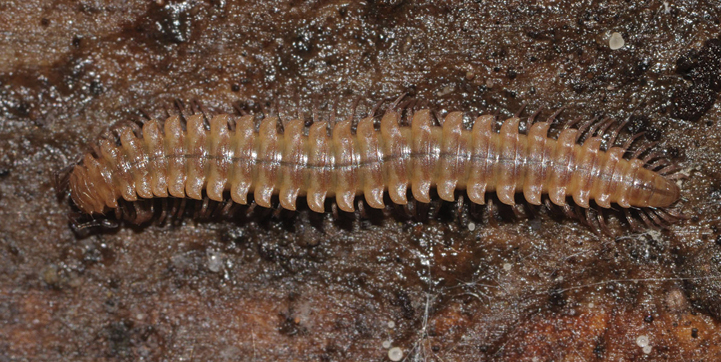|
Causeyella
''Causeyella'', is a genus of millipede Millipedes are a group of arthropods that are characterised by having two pairs of jointed legs on most body segments; they are known scientifically as the class Diplopoda, the name derived from this feature. Each double-legged segment is a resu ...s comprising three species: *'' Causeyella causeyae'' Shear, 2003 *'' Causeyella dendropus'' (Loomis, 1939) *'' Causeyella youngsteadtorum'' Shear, 2003 References Chordeumatida Cave millipedes {{Myriapoda-stub ... [...More Info...] [...Related Items...] OR: [Wikipedia] [Google] [Baidu] |
Causeyella Dendropus
''Causeyella'', is a genus of millipedes comprising three species: *'' Causeyella causeyae'' Shear, 2003 *'' Causeyella dendropus'' (Loomis, 1939) *''Causeyella youngsteadtorum ''Causeyella youngsteadtorum'', Youngsteadt's cave millipede, is a ghostly white millipede, first collected in 1976 by Norman and Jean Youngsteadt, but not recognized as a new species until 2003. It has been found in seven caves in Boone and Se ...'' Shear, 2003 References Chordeumatida Cave millipedes {{Myriapoda-stub ... [...More Info...] [...Related Items...] OR: [Wikipedia] [Google] [Baidu] |
Causeyella Causeyae
''Causeyella causeyae'', Causey's cave millipede, is a millipede, ghostly white in color, which was first noticed, but not identified, in 1964. It was discovered in caves in Arkansas in 2004. It has been found in 10 caves in Izard, Independence, and Stone In geology, rock (or stone) is any naturally occurring solid mass or aggregate of minerals or mineraloid matter. It is categorized by the minerals included, its Chemical compound, chemical composition, and the way in which it is formed. Rocks ... counties. References Cave millipedes Animals described in 2003 Chordeumatida Endemic fauna of Arkansas {{Myriapoda-stub ... [...More Info...] [...Related Items...] OR: [Wikipedia] [Google] [Baidu] |
Causeyella Youngsteadtorum
''Causeyella youngsteadtorum'', Youngsteadt's cave millipede, is a ghostly white millipede, first collected in 1976 by Norman and Jean Youngsteadt, but not recognized as a new species until 2003. It has been found in seven caves in Boone and Searcy counties in Arkansas Arkansas ( ) is a landlocked state in the South Central United States. It is bordered by Missouri to the north, Tennessee and Mississippi to the east, Louisiana to the south, and Texas and Oklahoma to the west. Its name is from the Osage .... References Chordeumatida Cave millipedes Animals described in 2003 Endemic fauna of Arkansas {{Myriapoda-stub ... [...More Info...] [...Related Items...] OR: [Wikipedia] [Google] [Baidu] |
Millipede
Millipedes are a group of arthropods that are characterised by having two pairs of jointed legs on most body segments; they are known scientifically as the class Diplopoda, the name derived from this feature. Each double-legged segment is a result of two single segments fused together. Most millipedes have very elongated cylindrical or flattened bodies with more than 20 segments, while pill millipedes are shorter and can roll into a tight ball. Although the name "millipede" derives from the Latin for "thousand feet", no species was known to have 1,000 or more until the discovery of ''Eumillipes persephone'', which can have over 1,300 legs. There are approximately 12,000 named species classified into 16 orders and around 140 families, making Diplopoda the largest class of myriapods, an arthropod group which also includes centipedes and other multi-legged creatures. Most millipedes are slow-moving detritivores, eating decaying leaves and other dead plant matter. Some eat fungi or ... [...More Info...] [...Related Items...] OR: [Wikipedia] [Google] [Baidu] |
Zootaxa
''Zootaxa'' is a peer-reviewed scientific mega journal for animal taxonomists. It is published by Magnolia Press (Auckland, New Zealand). The journal was established by Zhi-Qiang Zhang in 2001 and new issues are published multiple times a week. From 2001 to 2020, more than 60,000 new species have been described in the journal accounting for around 25% of all new taxa indexed in The Zoological Record in the last few years. Print and online versions are available. Temporary suspension from JCR The journal exhibited high levels of self-citation and its journal impact factor of 2019 was suspended from ''Journal Citation Reports'' in 2020, a sanction which hit 34 journals in total. Biologist Ross Mounce noted that high levels of self-citation may be inevitable for a journal which publishes a large share of new species classification. Later that year this decision was reversed and it was admitted that levels of self-citation are appropriate considering the large proportion of papers f ... [...More Info...] [...Related Items...] OR: [Wikipedia] [Google] [Baidu] |
Chordeumatida
Chordeumatida (from the Greek word for "sausage") is a large order of millipedes containing some 1200 species with a nearly worldwide distribution. Also known as "sausage millipedes," they possess around 30 body segments behind the head (including the telson) as adults and reach about in length. Description Chordeumatidans are relatively short-bodied, with only 26 to 32 body segments (including the telson) behind the head. They range in length from . A key feature is the presence of 6 large bristles (setae) on the dorsal surface of each body segment. The first segment ( collum) is relatively narrow, giving the appearance of a distinct "neck" in many species. The body tapers towards the rear, and the rearmost tip (telson) contains silk-producing organs (spinnerets). A dorsal groove runs down the length of the body, and some species possess paranota, lateral extensions of the exoskeleton. Paranota are also found in some other millipedes, notably Polydesmida, from which Chordeumat ... [...More Info...] [...Related Items...] OR: [Wikipedia] [Google] [Baidu] |

